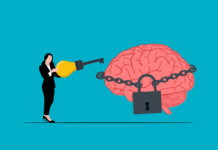Neuroplasticity, the brain’s remarkable ability to rewire and adapt, is a foundational aspect of human cognition. An entrepreneurship career, with its dynamic challenges, uncertainties, and constant need for innovation, serves as a fertile ground for fostering neuroplasticity. Lets look at how an entrepreneurship career actively nurtures and enhances neuroplasticity, contributing to cognitive flexibility, adaptability, and personal growth.
There are two main types of neuroplasticity:
- Structural Plasticity: This type of neuroplasticity involves physical changes in the brain’s structure, such as the formation of new neural connections (synaptogenesis), the pruning or elimination of existing connections (synaptic pruning), and changes in the branching and morphology of neurons.
- Functional Plasticity: Functional neuroplasticity refers to the brain’s ability to redistribute functions across different areas in response to changes in demand or damage. This type of plasticity enables the brain to compensate for deficits caused by injury or adapt to changing cognitive demands.
Synapses are fundamental to the communication between neurons and play a crucial role in transmitting signals and information throughout the nervous system. Synaptogenesis is a key aspect of neuroplasticity, which is the brain’s ability to adapt and reorganize itself in response to learning, experiences, and environmental changes.
During synaptogenesis, new synapses are created as neurons extend their axons (long projections of nerve cells) toward target cells. When the axon of one neuron comes into close proximity with the dendrite or cell body of another neuron, a synapse is formed. This synaptic connection allows electrical signals (action potentials) to pass from one neuron to another through chemical neurotransmitters released at the synapse.
For this essay, we will look at how an entrepreneurship career leads to synaptogenesis and synaptic pruning in your brain. Neuroplasticity is a fundamental aspect of the brain’s capacity to adapt to new experiences, learn new skills, recover from injuries, and constantly reshape itself throughout life.
Adaptation to Changing Landscapes: Entrepreneurs navigate ever-changing business landscapes, responding to market shifts, technological advancements, and evolving consumer preferences. This necessitates rapid adaptation, a skill closely tied to neuroplasticity. As entrepreneurs absorb new information, learn from failures, and pivot their strategies, their brains forge new neural pathways to process and integrate this knowledge. The brain’s ability to form and strengthen connections in response to changing demands aligns with the adaptive nature of entrepreneurship.
Learning from Failure: Failure is an integral part of entrepreneurship. Entrepreneurs encounter setbacks, market disappointments, and product failures. However, rather than being discouraged, they view failures as opportunities for growth. This perspective parallels the brain’s ability to rewire itself after challenges. When entrepreneurs learn from their mistakes and adjust their approaches, their brains undergo similar processes of synaptic pruning and formation, optimizing future responses.
Innovation and Cognitive Flexibility: Innovation is at the heart of entrepreneurship. Entrepreneurs constantly seek novel solutions to problems, pushing the boundaries of existing knowledge. This creative drive mirrors the brain’s capacity for cognitive flexibility—a cornerstone of neuroplasticity. Entrepreneurial endeavors require thinking beyond conventional boundaries, similar to how the brain forms new connections to accommodate unconventional ideas.
Risk-taking and Neural Rewiring: Entrepreneurs often take calculated risks to seize opportunities and disrupt industries. This trait resonates with the brain’s rewiring mechanisms. Engaging in risk-taking behavior stimulates the release of neurotransmitters and growth factors, promoting the formation of new synapses and the strengthening of existing ones. This process aligns with the entrepreneurial spirit of venturing into uncharted territories, physically and cognitively.
Continuous Learning and Synaptic Plasticity: Entrepreneurship demands ongoing learning. Entrepreneurs acquire knowledge spanning various domains, from marketing to finance, and incorporate these insights into their strategies. This continuous learning mirrors synaptic plasticity—the brain’s ability to modify the strength of connections between neurons. Just as entrepreneurs adapt their methods based on new information, the brain adjusts its synaptic strength to optimize cognitive processes.
Multidisciplinary Skill Acquisition: Entrepreneurs often wear multiple hats, necessitating the acquisition of diverse skills. This multifaceted approach aligns with neuroplasticity, which is enhanced by engaging in various cognitive activities. Learning new skills, such as negotiation, coding, or marketing, stimulates different neural networks, promoting the formation of new connections. The brain’s plasticity-driven response to skill acquisition supports entrepreneurs in managing multifunctional roles.
Resilience and Neural Reorganization: Resilience is crucial in entrepreneurship. Facing failures, rejection, and financial challenges requires mental fortitude and adaptability. The brain’s response to adversity parallels entrepreneurial resilience. In both cases, neural reorganization occurs, allowing for the optimization of pathways that support coping and recovery. Just as entrepreneurs rebound from setbacks, the brain rebuilds itself after stressors.
Networking and Brain Connectivity: Entrepreneurs often build extensive networks to collaborate, seek mentorship, and gather insights. These connections mirror the brain’s network of neurons. Just as entrepreneurs benefit from diverse perspectives, the brain thrives when different neural pathways communicate effectively. Networking stimulates brain regions associated with social cognition, reinforcing the idea that interactions in entrepreneurship mirror brain connectivity.
Implications of the Intersection: The convergence of entrepreneurship and structural neuroplasticity carries several implications:
- Educational Strategies: Understanding the parallels between entrepreneurship and structural neuroplasticity could inform educational approaches. Fostering cognitive flexibility, adaptability, and creative thinking in classrooms could better prepare students for entrepreneurial endeavors.
- Neuro-inspired Innovation: Entrepreneurs could draw inspiration from the brain’s adaptability to fuel innovative strategies. Embracing failure as an opportunity for growth aligns with the brain’s capacity to rewire in response to challenges.
- Neuroplasticity-Enhancing Practices: Entrepreneurs might adopt practices that enhance neuroplasticity, such as mindfulness, learning diverse skills, and engaging in creative activities. These practices could facilitate adaptability and innovation.
- Neurological Rehabilitation and Entrepreneurship: The principles of structural neuroplasticity could inform approaches to neurological rehabilitation, optimizing recovery after brain injuries. Likewise, entrepreneurial principles of adaptation and innovation might aid individuals in rebuilding their lives after setbacks.
Conclusion: An entrepreneurship career is not merely a journey of business creation; it’s a powerful avenue for enhancing neuroplasticity. Through the challenges, failures, innovations, and adaptations, entrepreneurs actively stimulate the brain’s ability to rewire and adapt. The parallels between entrepreneurship and neuroplasticity highlight the symbiotic relationship between cognitive processes and entrepreneurial pursuits. As entrepreneurs reshape industries, they simultaneously reshape their brains, fostering cognitive flexibility, adaptability, and personal growth. This synergy underscores the value of entrepreneurship not only for economic advancement but also for nurturing the very essence of human cognition and your brain’s long term health.












